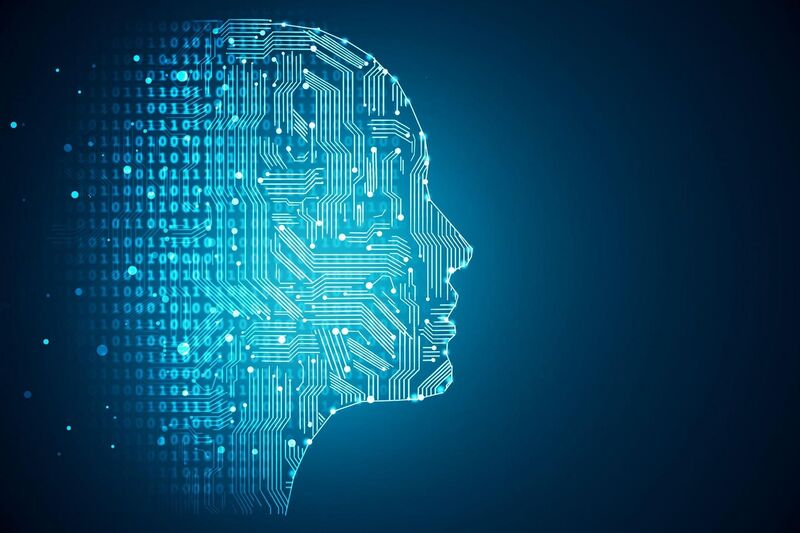How AI Works: Debunking The Myths Of Artificial Consciousness

Table of Contents
Understanding the Fundamentals of AI
What is AI?
Artificial intelligence (AI) is a branch of computer science focused on creating systems capable of performing tasks that typically require human intelligence. These core functions include learning, problem-solving, and decision-making. AI systems achieve this through complex algorithms and vast amounts of data.
- Machine Learning (ML): AI systems learn from data without explicit programming. This involves identifying patterns and making predictions.
- Deep Learning (DL): A subset of ML utilizing artificial neural networks with multiple layers to analyze data and extract complex features. This enables advanced capabilities like image recognition and natural language processing.
- Natural Language Processing (NLP): Focuses on enabling computers to understand, interpret, and generate human language. This powers chatbots, language translation tools, and sentiment analysis.
Algorithms are the sets of rules and instructions that dictate how an AI system processes information and makes decisions. These algorithms are designed to solve specific problems, from recognizing faces in images to predicting customer behavior.
How AI Learns
Machine learning is the driving force behind many AI systems. It involves training AI models on large datasets to identify patterns and make predictions. There are several types of machine learning:
- Supervised Learning: The AI is trained on labeled data, meaning the input data is paired with the correct output. Think of teaching a dog tricks; you show it what to do and reward it for correct behavior.
- Unsupervised Learning: The AI is given unlabeled data and must identify patterns and structures on its own. This is like giving a child a box of toys and letting them discover how they relate to each other.
- Reinforcement Learning: The AI learns through trial and error, receiving rewards for desirable actions and penalties for undesirable ones. This is similar to training a pet using positive and negative reinforcement.
These datasets, often massive in size, provide the raw material for AI to learn from. The larger and more diverse the dataset, the more accurate and robust the AI model becomes.
Debunking the Myth of Artificial Consciousness
The Difference Between Intelligence and Consciousness
A crucial distinction must be made between intelligence and consciousness. Intelligence refers to the ability to acquire and apply knowledge and skills, solve problems, and make decisions. Consciousness, on the other hand, involves subjective experience, self-awareness, and sentience. Current AI systems exhibit remarkable intelligence, but they lack consciousness. They can process information and solve problems incredibly efficiently, but they don't have feelings, beliefs, or self-awareness. The philosophical debate surrounding consciousness is vast and complex, but for the purpose of understanding AI, it's crucial to recognize this fundamental difference.
Common Misconceptions about AI
Many misunderstandings surround AI, fueled by science fiction portrayals. It's crucial to address these misconceptions:
- AI Can Think and Feel Like Humans: This is false. AI mimics human behavior through complex algorithms and vast data analysis, but it doesn't possess genuine understanding or emotions. A chatbot might provide empathetic responses, but it doesn't genuinely feel empathy.
- AI is Self-Aware: This is also incorrect. While some AI systems can adapt and learn, they lack self-awareness and a sense of self. Their actions are driven by algorithms and data, not by internal experiences.
- AI Will Soon Become Sentient: There's no scientific consensus on when or if this will ever happen. Creating artificial consciousness presents immense technological and philosophical challenges. The “anthropomorphism” bias – attributing human qualities to non-human entities – often leads to this misconception.
The Current Capabilities and Limitations of AI
What AI Can Do
AI excels in numerous areas:
- Image Recognition: AI systems can identify objects, faces, and scenes in images with remarkable accuracy.
- Natural Language Processing: AI powers language translation, chatbots, and sentiment analysis, enabling human-computer interaction in natural language.
- Game Playing: AI has achieved superhuman performance in games like chess and Go, showcasing its ability to learn complex strategies.
What AI Cannot Do
Despite its impressive capabilities, current AI faces significant limitations:
- Common Sense Reasoning: AI often struggles with tasks that require common sense or understanding of the real world.
- Creativity and Innovation: While AI can generate creative outputs (like art or music), it typically relies on existing patterns and data, rather than true originality.
- Genuine Understanding: AI processes information, but it doesn't genuinely understand the meaning or context in the same way humans do.
- General AI: Creating truly general AI – an AI capable of performing any intellectual task that a human being can – remains a significant challenge.
Ethical considerations regarding AI's potential impact on society are also paramount and deserve ongoing discussion.
Conclusion
In summary, AI is a powerful tool capable of extraordinary feats, but it is not conscious. Its functionality is based on algorithms, learning from vast datasets, and sophisticated processing of information. While its capabilities are impressive, it still faces significant limitations, particularly regarding common sense reasoning, creativity, and genuine understanding. Continue exploring the fascinating world of AI and dispel the myths surrounding artificial consciousness. Learn more about how AI works by exploring [link to relevant resource]. Understanding AI’s true nature and potential is crucial in navigating the future shaped by this transformative technology.

Featured Posts
-
 Jeff Goldblum Releases Unexpected New Album
Apr 29, 2025
Jeff Goldblum Releases Unexpected New Album
Apr 29, 2025 -
 One Plus 13 R Review Should You Buy It Or Opt For A Pixel 9a
Apr 29, 2025
One Plus 13 R Review Should You Buy It Or Opt For A Pixel 9a
Apr 29, 2025 -
 Jeff Goldblum And The Mildred Snitzer Orchestras I Dont Know Why I Just Do Featuring Ariana Grande A Musical Collaboration
Apr 29, 2025
Jeff Goldblum And The Mildred Snitzer Orchestras I Dont Know Why I Just Do Featuring Ariana Grande A Musical Collaboration
Apr 29, 2025 -
 Investigation Reveals Details Of D C Blackhawk Passenger Jet Crash
Apr 29, 2025
Investigation Reveals Details Of D C Blackhawk Passenger Jet Crash
Apr 29, 2025 -
 Ray Epps Sues Fox News For Defamation January 6th Allegations At The Heart Of The Lawsuit
Apr 29, 2025
Ray Epps Sues Fox News For Defamation January 6th Allegations At The Heart Of The Lawsuit
Apr 29, 2025
